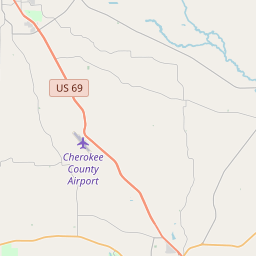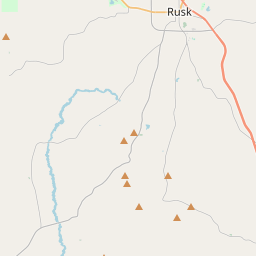First Presbyterian Church of Rusk
Historical marker location:












The Cumberland Presbyterian Church of Rusk was organized on May 2, 1847 by the Rev. J. B. Harris, with a charter membership of four. A Sunday School was begun in 1850, and existed as a Union school until the 1880s. Ecumenical relationships were strong with other churches in town, and the Presbyterian church building was used by various denominations. The "Old School" congregation of the Presbyterian Church in the U.S. was organized in March 1831 by the Rev. J. M. Becton and the Rev. J. C. Sharp, with eight charter members. A sanctuary was built on Henderson Street in 1854, and a parsonage was added in 1888-1889, largely through the efforts of the Ladies' Aid Society. The two congregations united to form the First Presbyterian Church on April 6, 1906. This property was acquired, and both church buildings were moved to the new site. The "Old School" church was converted to a parsonage. The present sanctuary was built in 1913-14, and was the first brick church in Rusk. A new parsonage was added in 1925. Throughout its history, which began one year after the city's founding, the Presbyterian church has sought to serve its community with outreach programs
As one of the most visible programs of the Texas Historical Commission (THC), historical markers commemorate diverse topics in Texas history, including: the history and architecture of houses, commercial and public buildings, religious congregations, and military sites; events that changed the course of local and state history; and individuals who have made lasting contributions to the state, community organizations, and businesses.
Texas was once an independent country: After winning its independence from Mexico in 1836, Texas became its own country, known as the Republic of Texas. It existed as an independent nation for nine years before being annexed by the United States in 1845.
In 1837, the Texas Congress established Cherokee County, named after the Cherokee people, who had settled in the area. The county seat was initially located in the town of Rusk, which had grown as a result of the influx of settlers. Over the years, the county went through various changes, with the establishment of new towns and the growth of the local economy. Agriculture, particularly cotton and livestock farming, became the backbone of the county's economy.
During the Civil War, the county faced significant hardships as many men from Cherokee County enlisted in the Confederate Army. The economy suffered, and the county experienced both political and social unrest. However, following the war, the region gradually recovered, and new industries such as lumbering and oil exploration emerged.
In the 20th century, Cherokee County witnessed significant changes in its economy and demographics. The discovery of oil in the early 1900s brought an economic boom to the area, attracting new businesses and residents. Today, the county continues to thrive, with a diverse economy that includes agriculture, manufacturing, and tourism. The county also pays tribute to its Native American heritage through various cultural and historical organizations.
Cherokee County Timeline
This timeline provides a concise overview of the key events in the history of Cherokee County, Texas.
- 1846: Cherokee County is created and organized.
- 1847: The town of Rusk is designated as the county seat.
- 1850s: The area sees conflicts between the Cherokee and local settlers.
- 1861-1865: Cherokee County residents serve in the Confederate Army during the Civil War.
- 1872: The International-Great Northern Railroad is built through Rusk, boosting the local economy.
- 1900: The discovery of the large Berry gypsum deposit leads to the establishment of the Frankston Gypsum Company.
- 1930s: The Great Depression causes significant economic challenges for Cherokee County.
- 1942: Camp Fannin, a World War II army training camp, is established in Cherokee County.
- 1982: Lake Palestine is completed, providing recreational opportunities for residents and visitors.
- Present: Cherokee County continues to be a vibrant community with a mix of agricultural, industrial, and recreational activities.